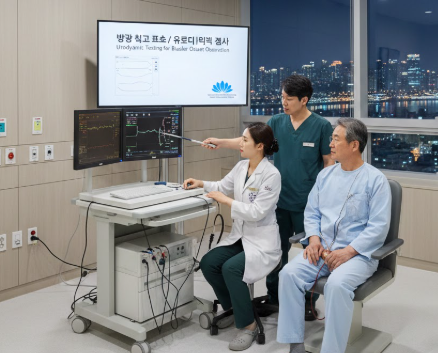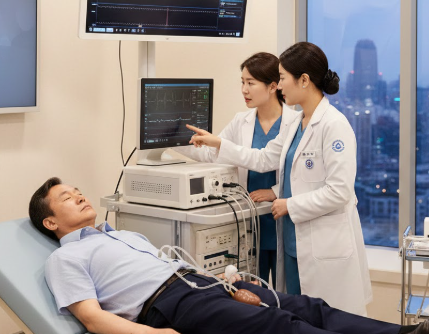Treatment Overview
The Robot-Assisted Laparoscopic Uterus Removal (RALUR) in Korea is a highly advanced, minimally invasive hysterectomy technique that utilizes robotic surgical systems to enhance precision, safety, and patient comfort. This method integrates high-definition laparoscopic imaging with robotic-assisted instruments, allowing surgeons to perform uterus removal with superior dexterity and control.
Korea is a global leader in robotic gynecologic surgery. Hospitals across the country combine cutting-edge robotic platforms such as the da Vinci Surgical System with extensive surgical expertise to deliver superior outcomes. This combination results in safer surgery, faster recovery, and minimal scarring, making Korea a top destination for women seeking advanced uterus removal procedures.
Purpose & Benefits
Purpose:
- Provide precise and safe removal of the uterus for various conditions, including fibroids, adenomyosis, endometriosis, prolapse, and certain cancers
- Reduce surgical trauma while ensuring complete uterus removal
- Improve recovery time and overall patient comfort
Benefits:
- Greater surgical precision with robotic control
- Reduced intraoperative bleeding
- Minimal scarring with small laparoscopic incisions
- Short hospital stays (1–2 days on average)
- Faster recovery and return to normal activities
- Reduced postoperative pain and complications
- Enhanced preservation of surrounding pelvic structures
Ideal Candidates
This procedure is appropriate for women who:
- Require uterus removal for benign or malignant uterine conditions
- Prefer a minimally invasive procedure with robotic assistance
- Seek faster recovery and minimal surgical trauma
- Want to preserve pelvic function
- Are in good overall health and suitable for laparoscopic surgery
Korean hospitals perform a thorough preoperative assessment, including diagnostic imaging, blood tests, and individualized consultation to ensure the procedure is appropriate for each patient.
Possible Risks & Complications
While RALUR is highly safe, possible risks include:
- Minor bleeding or infection
- Injury to surrounding pelvic structures (rare)
- Temporary urinary or bowel discomfort
- Anesthesia-related side effects
- Scar tissue formation (adhesions)
Korea’s advanced robotic systems and expert surgeons minimize these risks by offering real-time imaging and precision-controlled surgical movements.
Surgical Techniques Used
Korean medical centers employ cutting-edge robotic and laparoscopic technology for uterus removal:
- 3D High-Definition Imaging: Provides detailed visualization for precise dissection.
- Robotic-Assisted Laparoscopy: Offers enhanced dexterity, tremor reduction, and fine movement control.
- Single-Port or Multi-Port Laparoscopy: Minimizes scars and reduces recovery time.
- Energy-Based Vessel Sealing (Ultrasonic/Bipolar): Ensures bloodless and efficient surgery.
- Fluorescence Imaging (ICG): Helps identify blood vessels and critical structures.
This combination of robotic precision and advanced visualization ensures a safe and effective uterus removal process.
Recovery & Aftercare
The recovery for RALUR is usually faster compared to traditional hysterectomy. Patients can often walk within hours after surgery and return home within 1–2 days.
Postoperative care typically includes:
- Pain management and incision monitoring
- Avoidance of strenuous activity for 4–6 weeks
- Follow-up visits for surgical and pelvic health evaluation
- Pelvic floor rehabilitation, if indicated
- Nutritional and hormonal support
Korean hospitals often offer integrated aftercare programs, including physiotherapy, wellness counseling, and nutritional guidance to optimize healing.
Results & Longevity
Robot-assisted laparoscopic uterus removal offers excellent long-term results:
- Precise and complete removal of the uterus
- Minimal postoperative pain and scarring
- Faster recovery and return to daily life
- Preservation of pelvic function and strength
- Reduced risk of recurrence of uterine conditions
- High patient satisfaction and quality-of-life improvement
Korean surgical teams ensure consistently high-quality outcomes by combining precision technology with comprehensive patient care.
Treatment Process in Korea
The process for RALUR in Korea follows a clear, patient-focused structure:
- Comprehensive Preoperative Evaluation: Includes imaging, lab tests, and detailed consultation.
- Customized Surgical Planning: Based on uterine condition, anatomy, and patient goals.
- Robot-Assisted Laparoscopic Surgery: Performed using high-definition robotic systems with precision guidance.
- Postoperative Recovery & Rehabilitation: Includes physiotherapy, nutritional support, and follow-up.
International patients benefit from full concierge support in Korea, including assistance with travel, accommodation, and translation services.
Cost Range
The Robot-Assisted Laparoscopic Uterus Removal in Korea generally costs between USD 11,000 and 20,000, depending on:
- Surgical complexity and technology used
- Hospital and surgeon expertise
- Length of hospital stay and aftercare needs
Costs usually include consultation, surgery, anesthesia, hospitalization, and post-surgery care.
Popular Clinics
- Samsung Medical Center (Seoul): Specializes in robotic-assisted laparoscopic hysterectomy with precision guidance and holistic recovery.
- Asan Medical Center (Seoul): Offers advanced robotic uterus removal with comprehensive care.
- Severance Hospital (Yonsei University, Seoul): Known for excellence in robotic gynecologic surgery.
- CHA Gangnam Medical Center: Leader in single-port and robotic laparoscopic uterus removal.
- Ewha Womans University Medical Center: Offers robotic-assisted uterus removal combined with individualized rehabilitation programs.




